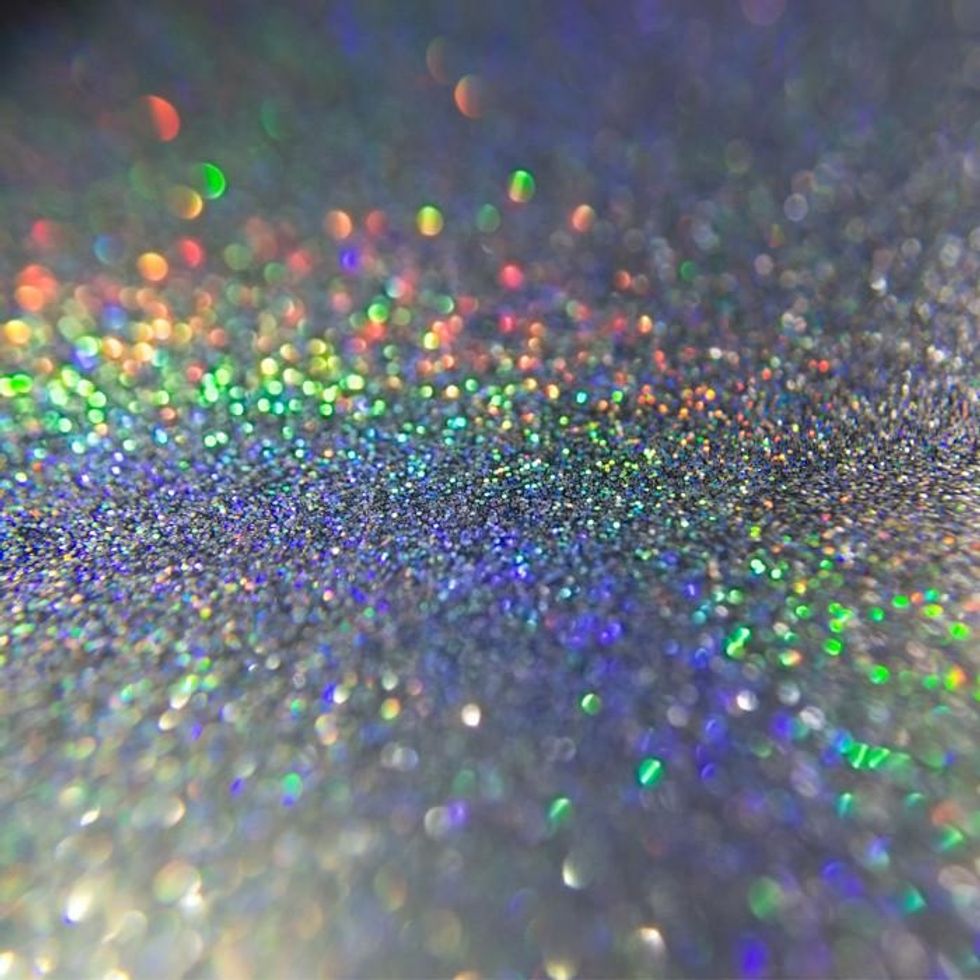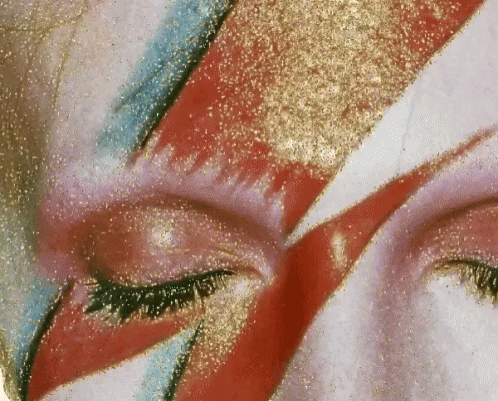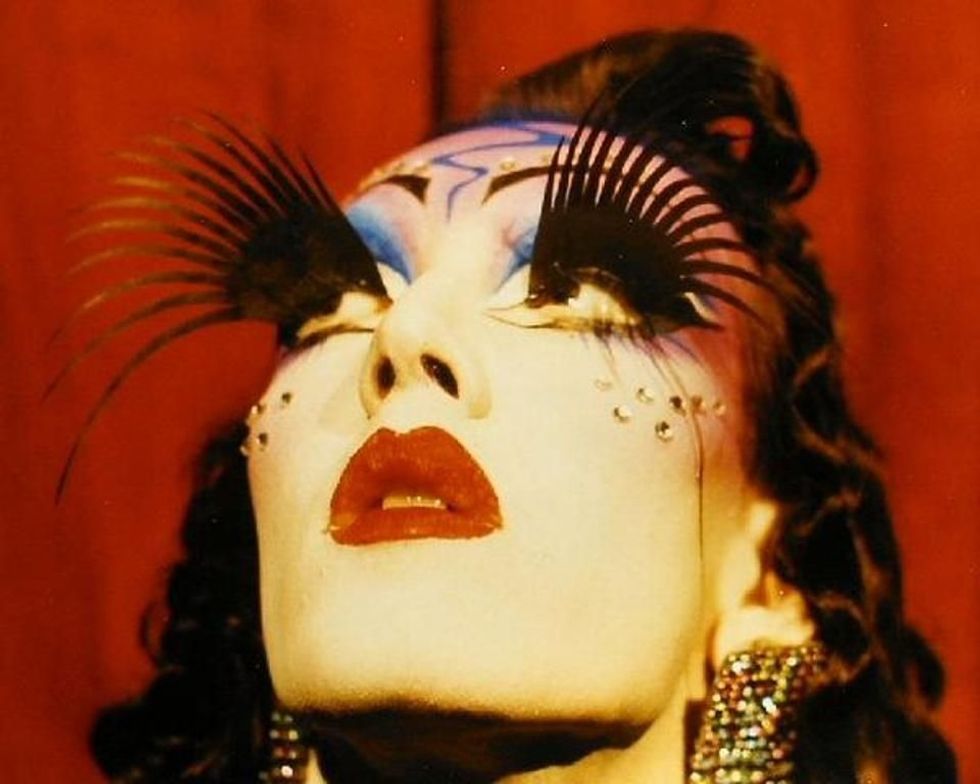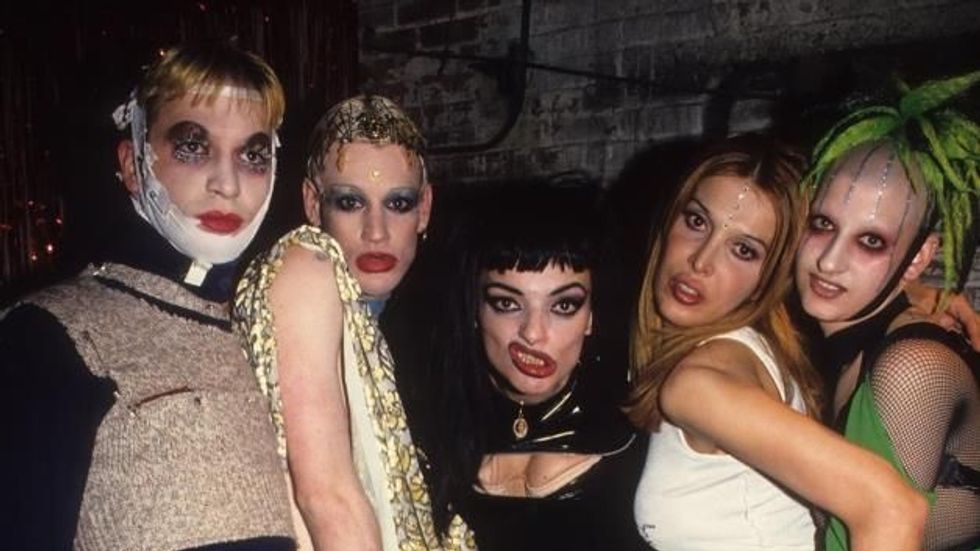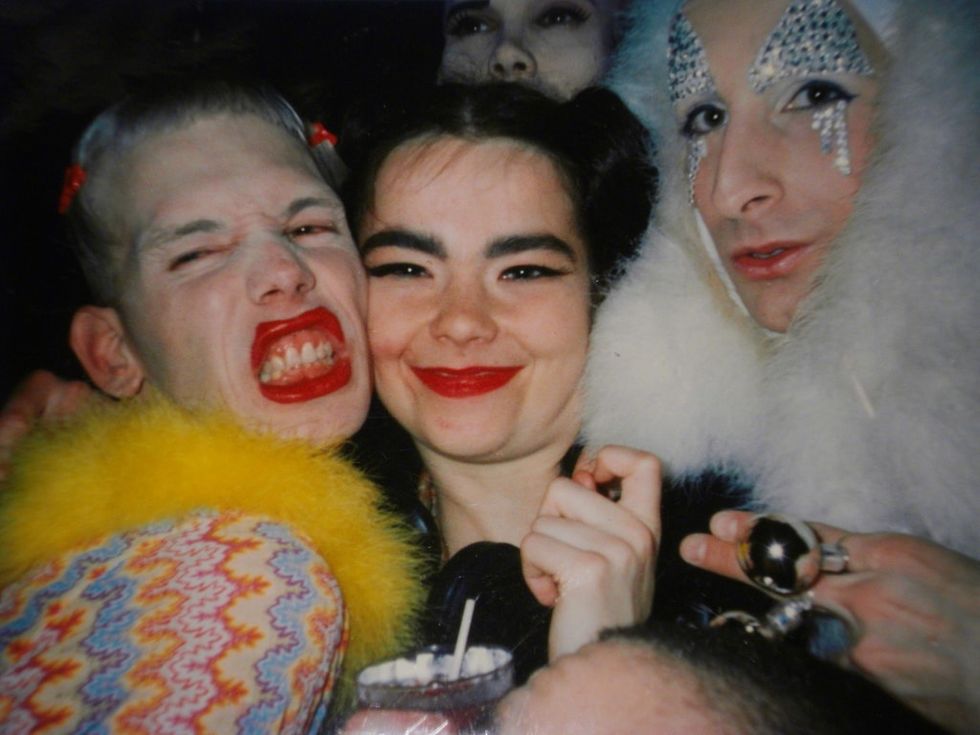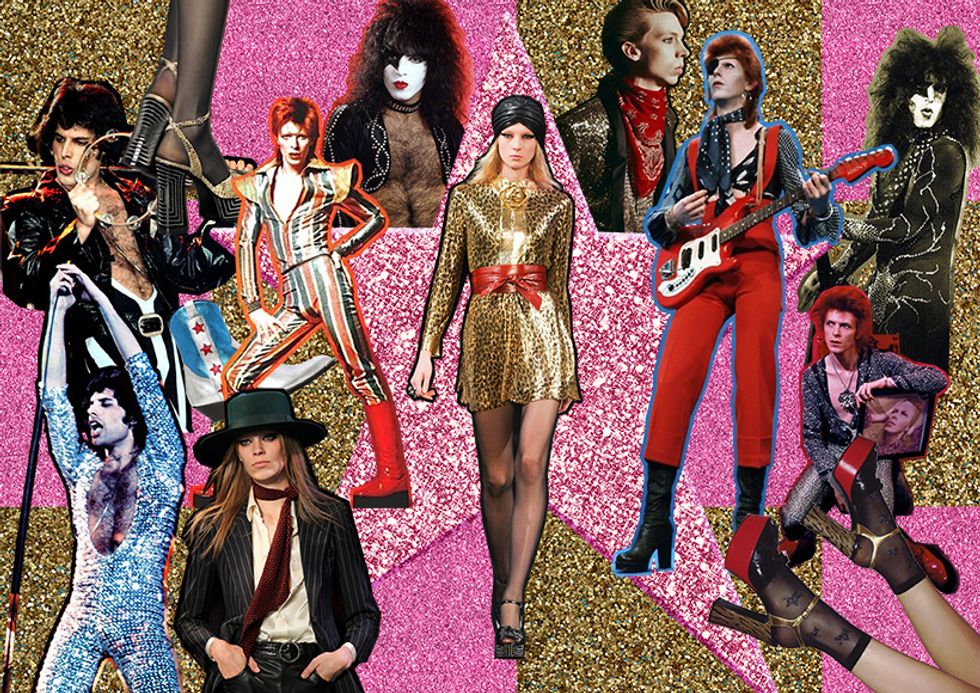Since its inception, glitter has been a sign of rebellion, defiance, and celebration.
Joyful and vicious, unapologetic and celebratory, it’s the perfect accent piece for disobedience (and the celebration of that disobedience) in any form. It’s also just really, really fun to look at.
The first glitter was made from mica, and shimmery substances were used in Paleolithic cave paintings as far back as 10,000 BCE. Like most of our modern makeup, glitter as glam wear was invented by Cleopatra in Ancient Egypt, who made the substance by crushing up beetles.
Glitter as we know it was invented in 1934 by the machinist Henry Ruschmann in New Jersey. Besides it role in counterculture, it also been used as forensic evidence, as clothing, as makeup, and as the main theme of a failed 1983 Mariah Carey movie.
Glitter as Queer Symbolism
Glitter is arguably a religious symbol for queer communities and subcultures, a way of finding radiance in darkness and embracing one’s true colors. “Just as religious symbols (like a cross or a Star of David) signal community and connection, wearing glitter is a way to signal our queer identities not only to ourselves but also to each other,” writes Laura Dorwart on byrdie.com.
A staple in drag queen performances and nightlife, early drag queens like LaVerne Cummings, Barbette, and Gene La Marr all favored glittery eyeshadow before the 1950s. Glitter remains a staple in drag culture and queer culture today. Though of course not all queer people love or even like glitter, it’s had staying power as an emblem of a specific type of queer expression.
As Caconrad writes in The New Yorker, “Glitter is not enabling denial of the world’s pain but instead helps us endure the bleak results of those who are in denial of how we need one another. If you have a scar or bent nose that has become the center of your life trust me when I say own it and apply glitter blush directly, immediately. Before you die join me in loving our flesh, loving our lives. Our attempts at living beyond the judgments of others do not always work, but it is worth a try. I am not much for religion, but I would follow The Ruschmann Glitter Cult.”
Glitter as Revelry
Glitter is a celebratory force across the ages, a staple of club kids, ravers, and superstars. It was a classic choice for David Bowie, whose iconic Ziggy Stardust lightning bolt worked itself into history. They helped create “Glitter Rock,” a more extreme version of glam rock.
The seventies were arguably glitter’s greatest decade. In the eighties, bands like Motley Crue and Poison (and their fans) showered themselves in the material. At the same time, glitter was a staple among ravers.
Today, glitter has persisted, moving beyond its early-aughts bedazzling phase and becoming a symbol of youthful defiance and angst thanks to shows like Euphoria—and thanks to a few acts of shimmering defiance.
Glitter As Rebellion
In 2011, the so-called “glitter bomber” Nick Espinoza’s explained his decision to shower Newt Gingrich with a Cheez-It box full of glitter. “What I have tried to do with creative forms of protest like glittering is to capture people’s imagination and tap into a cultural point of reference with a piece of political theater projected into the real world,” he said. “By creating a moment of conflict I shine a light onto the hypocrisy and bigotry of our current political discourse in a way that is as entertaining as it is dramatic.”
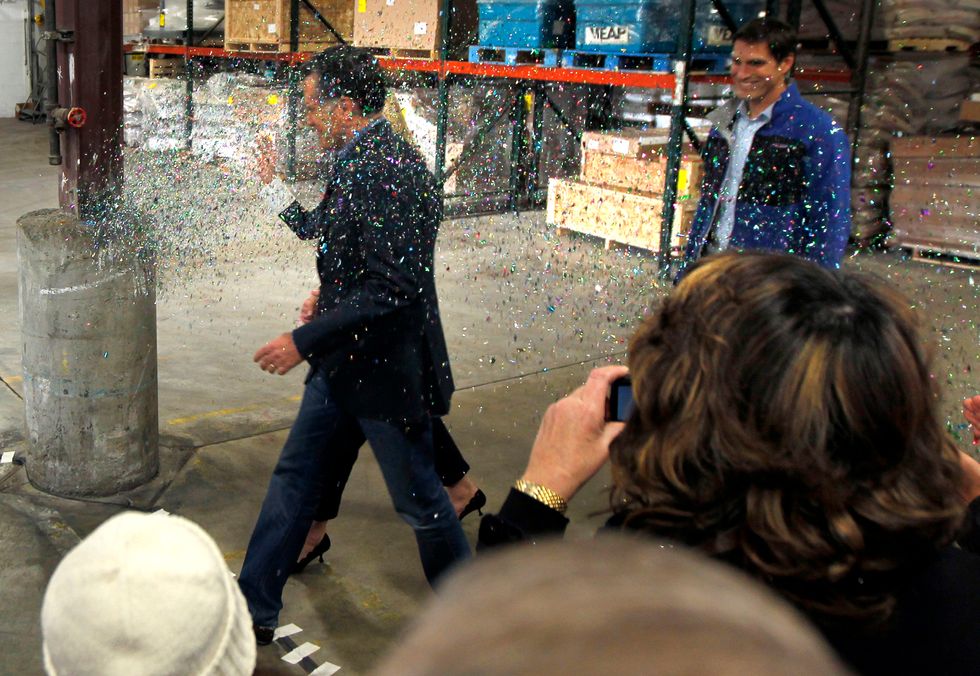 Mitt RomneyASSOCIATED PRESS
Mitt RomneyASSOCIATED PRESS
This tactic, known as “glitter bombing,” became popular in the early 2010s after Espinoza’s action. After the Gingrich incident, Michele Bachmann and then-GOP candidate Tim Pawlenty were subject to glitter bombs. In 2011, a group of LGBTQ activists stormed a gay reparative therapy clinic and threw glitter everywhere while shouting, “You can’t pray away the gay, baby, I was born this way.” These bombers were named the “glitterati.” Mitt Romney, Rick Santorum, and Richard Spencer were also targeted.
The tactic of mailing glitter to opponents also became popular in the mid-2010s. For example, the organization Glitter Bombs for Choice began mailing anti-abortion websites packages of glitter in 2015. As of 2017, sparkle-covered Ash Wednesday crosses were popping up in front of Mike Pence’s house.
In Mexico, glitter-bombing is also at the center of a movement. As of 2019, women in Mexico are leading a “glitter revolution” to protest rape culture and escalating violence against women. According to feminist illustrator Mariana “Maremoto” Lorenzo Contreras, “During the march, we threw glitter at people watching us, we threw it everywhere. We wanted to leave a pink stain on the street. We want the violence that we experience as women in this country to be like glitter: impossible to ignore. Glitter,” she added, “could be a representation of what we ‘have’ to be: pretty, sparkling. And we took it and threw it back at the patriarchy, as a way of saying ‘we don’t want it anymore.'”
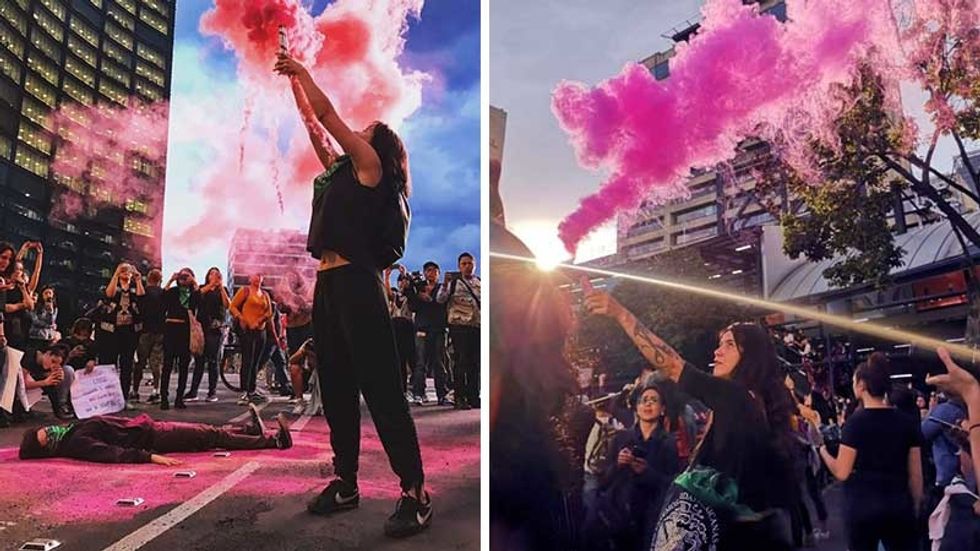 https://www.nosotros-los-diseñadores.com/2019/08/17/mexicanas-al-glitter-de-guerra/
https://www.nosotros-los-diseñadores.com/2019/08/17/mexicanas-al-glitter-de-guerra/
Mexican drag queens and sex workers are also using glitter as protest, by simply dressing up in full glittery regalia. In America, drag queens are using similar tactics.
The Future of Glitter
Glitter has a long history and a great deal of importance, but our modern forms of glitter are made of plastic. Therefore, many environmental activists have called for a ban on it, or a mandated switch to more eco-friendly biodegradable sparkle.
On the other hand, some writers have argued that completely banning glitter instead of attacking large fossil fuel corporations and the systems that created environmental issues in the first place is hypocritical, especially since glitter is so near and dear to so many people and movements.
Still others argue that the current moment presents a unique opportunity for queerness and environmentalism can come together. “The recent environmentalist backlash against glitter due to its microplastic constitution has overlapped with the development of biodegradable glitter products such as “glitter beer”—often marketed to LGBTQ+ communities,” writes Cornell University’s Diversity and Inclusion department about a talk by Nicole Seymour. “Glitter [is] a unique material site at which to consider the shifting intersections of environmental and queer politics, and to confront the impending future.” This is already happening. In Mexico, for example, a recipe for biodegradable glitter was circulated among activists before their August 16 march. Why Glitter?So why are we so drawn to glitter? It’s an undeniably powerful substance on a visual and tactile level, but some scientists favor the idea that we love glitter and sparkly things for a more primal reason. Glitter is a “manipulation of humans’ inherent desire for fresh water,” Caity Weaver in the New York Times. But it’s also more. It’s “an intangible light effect made physical. Mostly plastic, and often from New Jersey. Disposable by design but, it turns out, not literally disposable. A way to make long winter nights slightly brighter, despite the offshore presence of Germans. An object in which the inside of a potato chip bag meets the aurora borealis.”
There is something to things that shine, flicker, and glow in the darkness that has a powerful resonance for anyone seeking some form of transcendence. In The Neutral, Roland Barthes writes that the “inventory of shimmers is of nuances, of states, of changes.” His analysis of shimmering things has been used to analyze everything from trans cinema to change itself, but one thing is clear: Though the application of glitter might change across time and issue, it’s very important to never stop shining.
